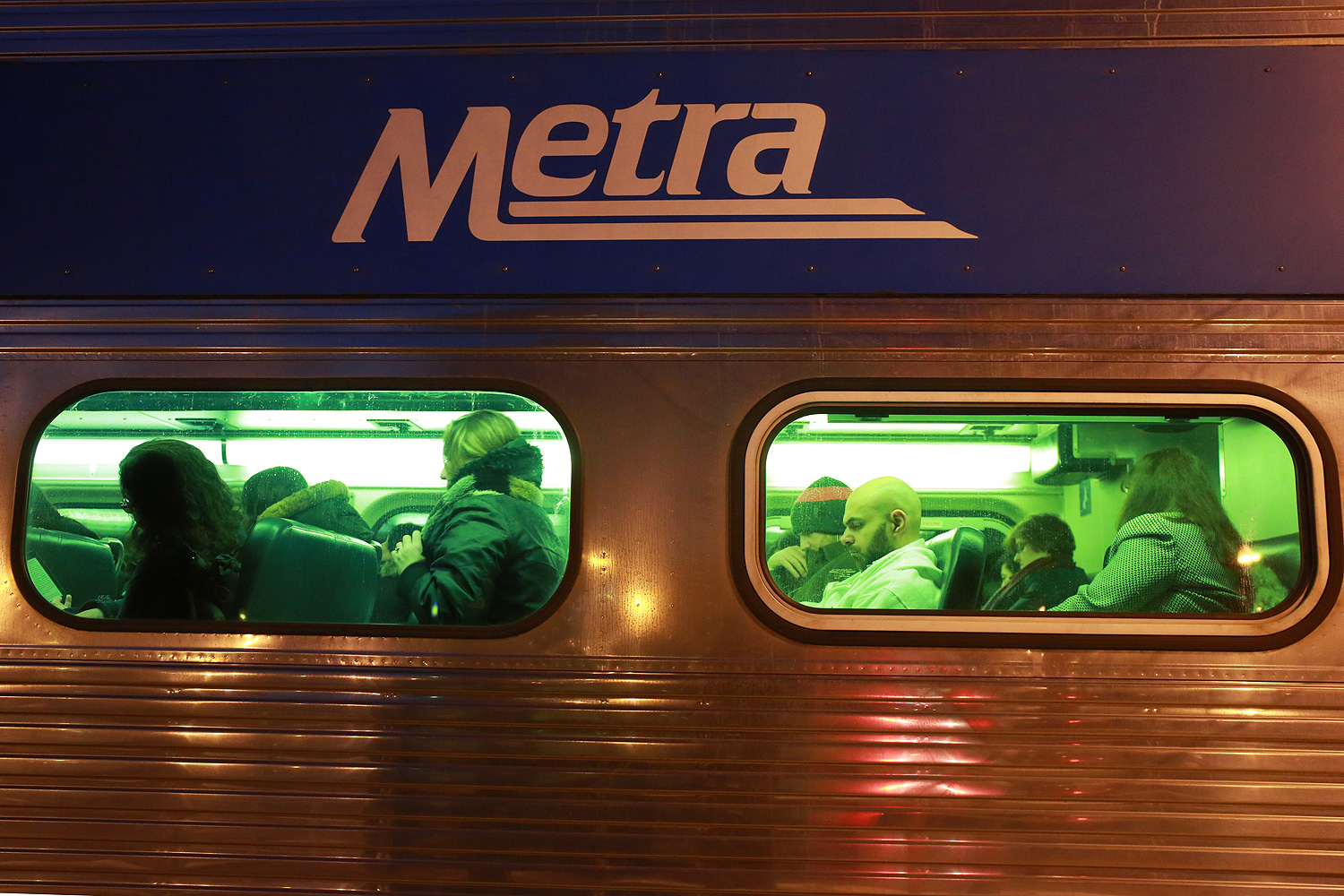When I spoke to the Metropolitan Planning Council's Marisa Novara about the growth of Chicago's far southwest side, she also touched on something interesting that she's written about (in collaboration with MPC's Breann Gala): the problem of concentrated wealth in the city. Which is not necessarily what you might think.
"From an economic standpoint, what I repeatedly came across was that, with a knowledge economy, we rely on labor of all kinds, high and low skilled very closely together," Novara said. "When jobs are further and further from where people live, when low-wage workers have to pay a huge amount of their paycheck just to get to work, or when they're located in places that public transit doesn't go, it's not just a detriment to an individual low-wage worker, it actually negatively impacts the whole economy. Higher skill work needs the lower skill work in order to thrive.
"I quote an article that gets at some example—high-end architects alongside plumbers, office towers near cab stands, biotech inventors with security guards. When people of different skill levels can't coalesce physically in the workplace, it puts a damper on the region's economy. It is not just about the social-empathy part that I talked about in the article, which is important as well, but the economic standpoint I found fascinating."
In other words, the concentration of wealth (and the concentration of poverty) among individuals is bad for the wealth of the region as a whole. To support this, Novara cites "recent research from Harvard University highlighting that commuting time has emerged as the strongest factor in determining whether a person escapes the cycles of poverty."
That research is from Raj Chetty, an econ prodigy and recent John Bates Clark medalist who has recently produced some seminal work on economic mobility in America, including the 2014 paper "Where is the Land of Opportunity? The Geography of Intergenerational Mobility in the United States." And he and his co-authors found something that genuinely surprised me (emphasis mine).
We explore this mechanism [spatial mismatch, i.e. geographic access to jobs] in Column 6 by correlating upward mobility with the fraction of individuals who commute less than 15 minutes to work in the CZ [commuting zone], based on data from the 2000 Census. Areas with less sprawl (shorter commutes) have significantly higher rates of upward mobility; the correlation between commute times and upward mobility is 0.605. Column 7 shows that commute times remain a significant predictor of upward mobility in a multivariable regression but income segregation does not.
These results are consistent with the view that the negative impacts of segregation may operate by making it more difficult to reach jobs or other resources that facilitate upward mobility. But any such spatial mismatch explanation must explain why the gradients emerge before children enter the labor market, as shown in Section V.E. A lack of access to nearby jobs cannot directly explain why children from low-income families are also more likely to have teenage births and less likely to attend college in cities with low levels of upward mobility. However, spatial mismatch could produce such patterns if it changes children’s behavior because they have fewer successful role models or reduces their perceived returns to education.
(A 15-minute commute struck me as being unrealistically short, but the nationwide average is 26 minutes.)
By Chetty's numbers, commute time is up there with the fraction of single parents in terms of correlation. Family structure, is, of course, an age-old social concern; commuting time, not so much. All Chetty and his co-authors do is correlate, though they take a little stab at causation. And it reminded me of my own commuting experience.
Not long after becoming a parent, I started biking to work more and more. There were a lot of reasons—cost, mental health—but the main reason was that I shaved 20 minutes to an hour off my commute every day. I can bike to work in 25 minutes flat, with virtually no variation; the bus ride is usually at least 35 minutes, often 45 or more in bad traffic or weather. (Biking on Grand, I'd measure my commute less by time than the number of 65 buses I passed, usually two each way.) That's an extra half-hour to an hour with my kid every weekday. And that time—and the reduced stress from a shorter, much more predictable commute—could matter quite a bit.
Chetty's conclusion also reminded me of Dana Suskind's Thirty Million Words Project, grounded in research indicating that children from low-income families hear far fewer words in their first few years of life:
Northwestern University professor Amy Booth is a leading expert on early language learning. Booth—who is not involved with the 30 Million Word study—emphasizes that the word gap is not about bad parenting.
“Parents who are under economically stressed circumstances have less resources available to them,” Booth said. “They also have less time available to them, because they might be working multiple jobs, so they don’t have the luxury of spending the same amount of time with their children, interacting with them.”
Working multiple jobs is one way to have less time with your kids; a long commute is another.
It's not that commuting time is a magic bullet; no one factor Chetty studied is. But among the factors he did study—family structure, race and income segregation, school quality, social capital—it doesn't get a lot of attention for its effects on social outcomes. And (as Yonah Freemark details) it's something local governments can play a direct role in addressing.




